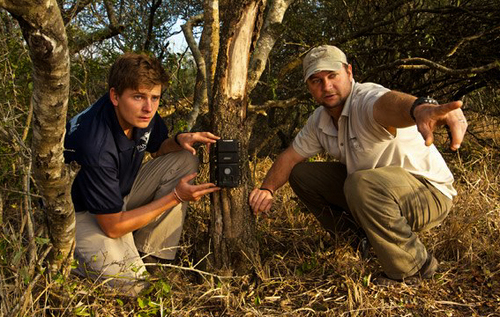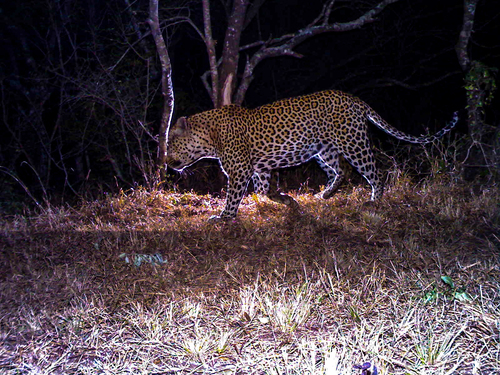Methods
Summary
Camera-traps coupled with a robust capture re-capture framework will be our key methods used to enumerate leopards in strategic sites across Sri-Lanka. Our team will use the previously applied protocols used on tigers and leopards in India and South Africa. Camera-traps will be set in places with a high likelihood of detecting leopards, namely large roads, elephant trails and dry riverbeds. Our 52 day survey period is an appropriate length to make sure we meet the assumption of demographic closure.
Our team members have published previous papers on snow leopards in China (http://journals.plos.org/plosone/article?id=10.137...) and leopards in South Africa (http://journals.plos.org/plosone/article?id=10.137...) using these same protocols. They are repeatable and tested.

Challenges
Camera-trap survey success hinges on two key factors, 1) making sure you photograph enough leopards and 2) ensuring survey length is short enough so leopards don't leave, enter, are born or die during the survey. Our plan to set cameras on roads, in dry riverbeds and trails and limiting our survey period to 52 days will increase the robustness of our survey. The highly productive forests and scrub of the national parks will also ensure naturally high leopard detections.
Pre Analysis Plan
Once we have retrieved camera-traps from the field, we will examine the digital photographs of leopards using their unique rosette and spot patterns. Each leopard will be assigned a unique id and the date, time and location of where it was photographed will be logged in a unique folder.
These data will then be entered into a data matrix into Bayesian and maximum likelihood capture re-capture software packages in the R statistical environment. Both packages fit a probabilistic detection function to enumerate leopards based upon their captures, locations of capture and time of capture. Both packages are the leading enumeration software for big cats such as tigers, leopards and snow leopards: https://cran.r-project.org/web/packages/secr/secr.... and http://onlinelibrary.wiley.com/doi/10.1111/j.2041-...
One of the most important considerations in the analysis of big cat photo trap data is maximizing sample sizes. We believe our field approach will maximize leopard capture rates and help increase the precision of our estimates (this is governed not only by the number of unique leopards photographed but also the number of times they are photographed repeatedly during a survey).

Protocols
This project has not yet shared any protocols.